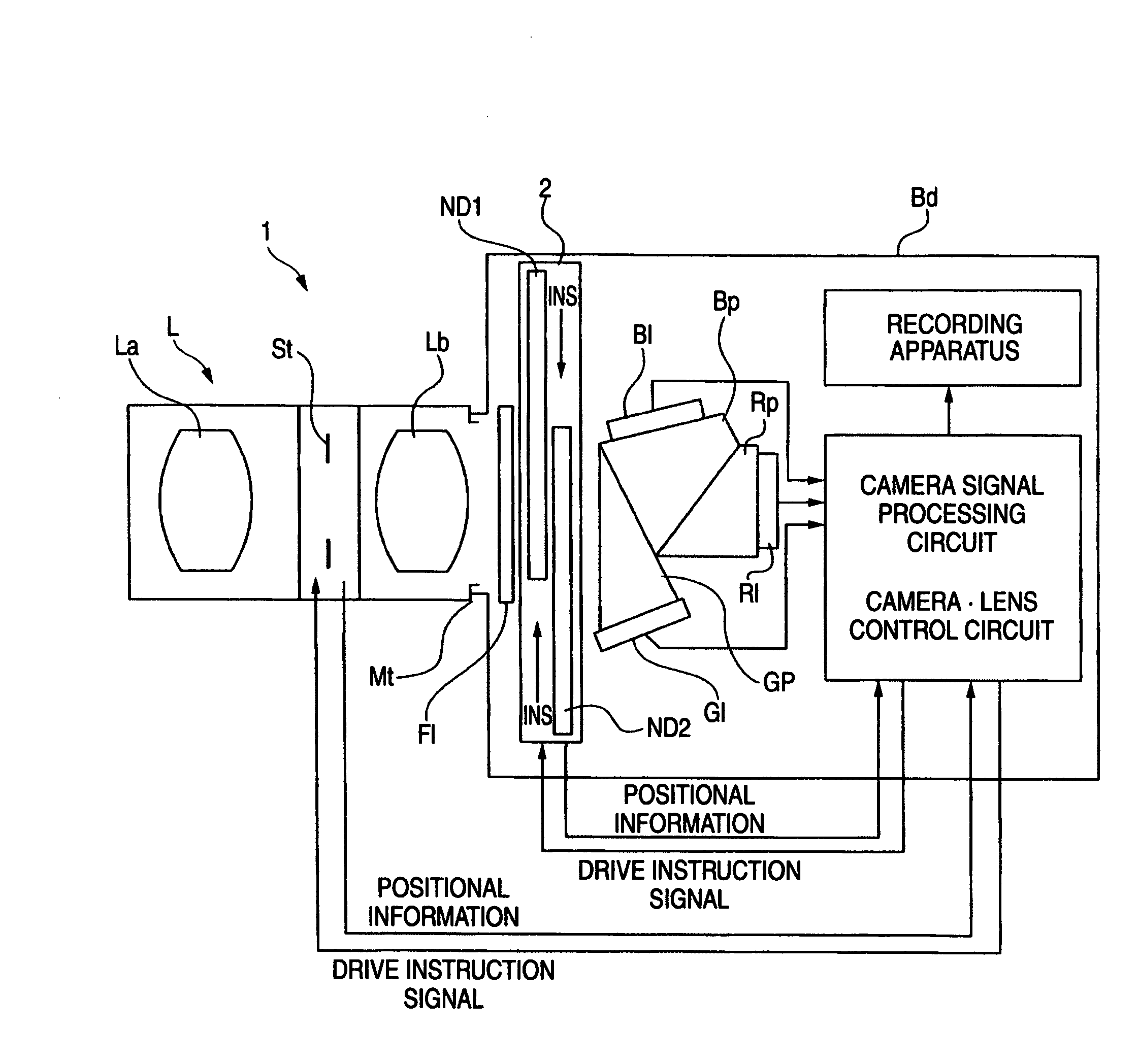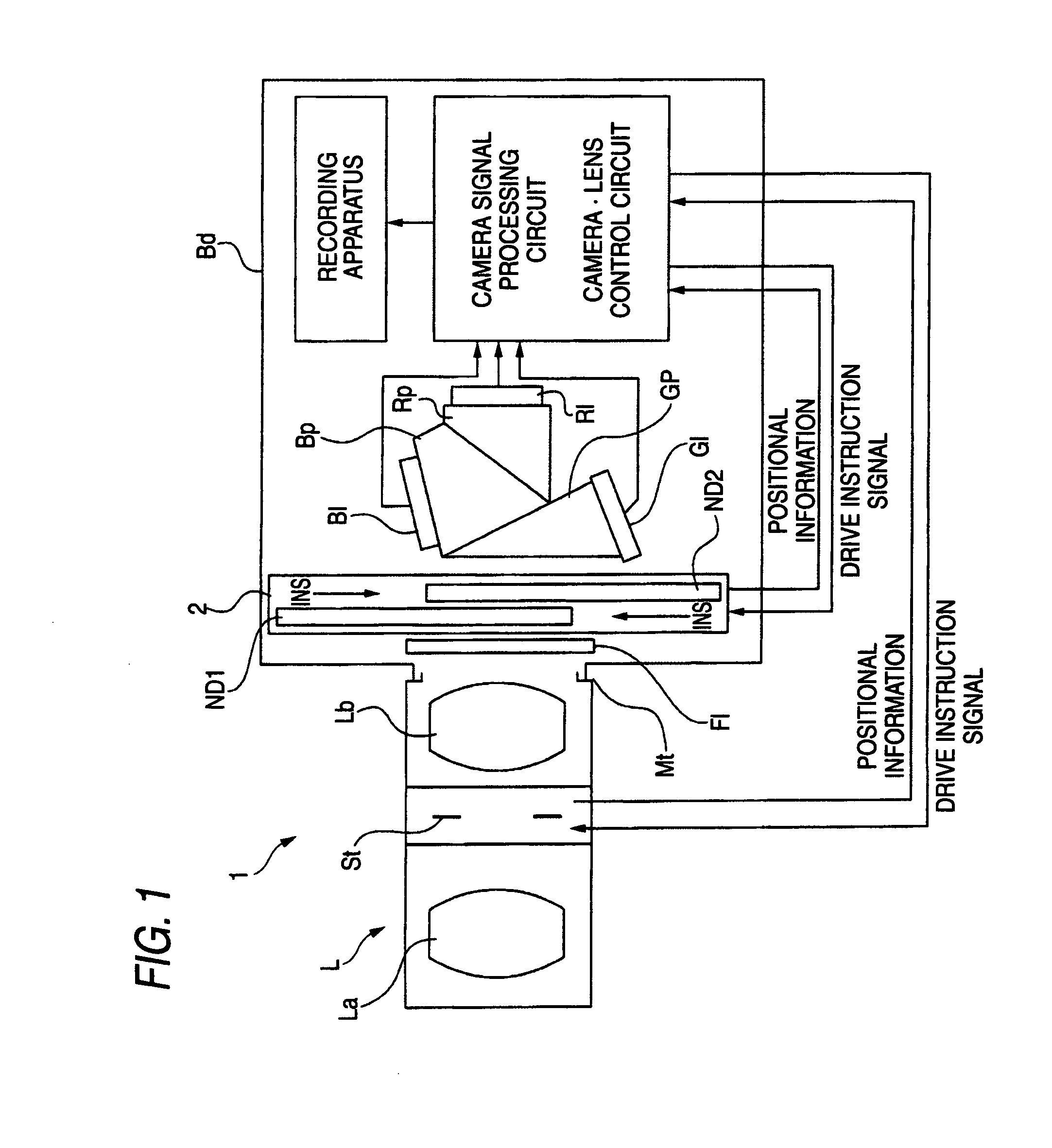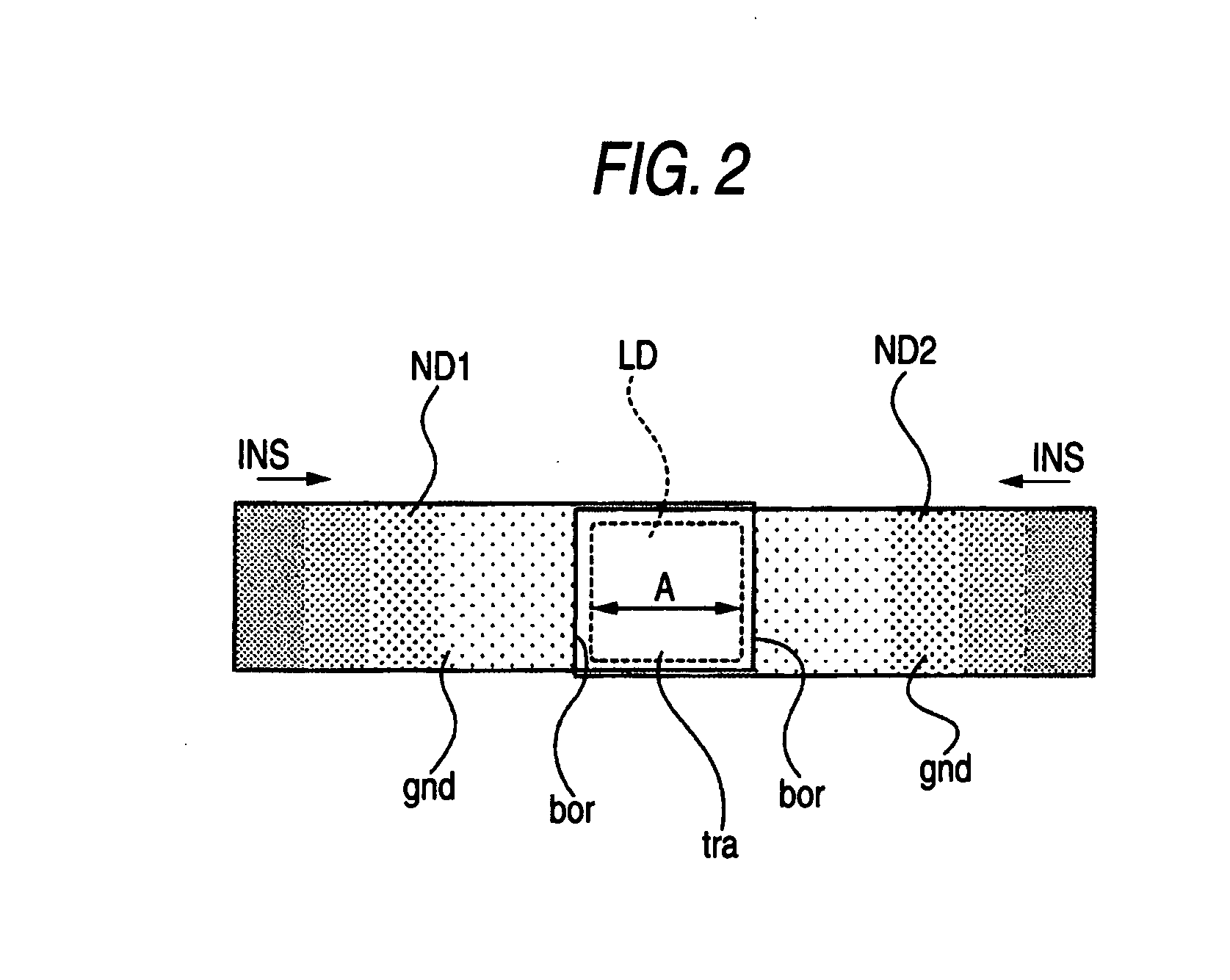Light amount adjuster and imaging apparatus
- Summary
- Abstract
- Description
- Claims
- Application Information
AI Technical Summary
Benefits of technology
Problems solved by technology
Method used
Image
Examples
first embodiment
[0063]FIG. 1 schematically shows the imaging apparatus according to the invention.
[0064]The imaging apparatus 1 includes a lens L, a light amount adjuster 2 and imaging devices GI, BI and RI. The light amount adjuster 2 includes two filter members ND1 and ND2 disposed such that they face each other and can symmetrically move with respect to each other, each of the filter members having a gradation ND region where the transmittance continuously changes and a transparent region where the transmittance is uniform and at least 80%. The light amount adjuster 2 is also configured such that in order to provide the highest transmittance, the transparent regions of the two filter members overlap each other and cover the entire light path, while in order to limit the amount of transmitted light, the gradation ND regions are symmetrically inserted into the light path from opposite positions in such a way that the ND density of the gradation ND region in the light path gradually increases so as...
second embodiment
[0081]FIG. 7 shows filter members aND1 and aND2 used in the light amount adjuster 2. Each of the filter members aND1 and aND2 has a gradation ND region gnd where the transmittance continuously changes and a lowest density region lnd where the transmittance is uniform and 80% or lower.
[0082]In the light amount adjuster 2 using the filter members aND1 and aND2, the two filter members aND1 and aND2 are disposed such that they face each other and can symmetrically move with respect to each other. To provide the highest transmittance, the two filter members aND1 and aND2 are both retracted from the light path LD. To limit the amount of transmitted light, one or both of the lowest density regions lnd of the filter members aND1 and aND2 are inserted into the light path LD and cover the entire light path LD, and then, the gradation ND regions gnd are symmetrically inserted into the light path from opposite positions in such a way that the ND density of the gradation ND region gnd in the li...
third embodiment
[0090]FIG. 11 shows filter members bND1 and bND2 used in the light amount adjuster 2. Each of the filter members bND1 and bND2 has a gradation ND region gnd where the transmittance continuously changes, a lowest density region lnd where the transmittance is uniform and 80% or lower and a transparent region tra where the transmittance is uniform and at least 80%.
[0091]In the light amount adjuster 2 using the filter members bND1 and bND2, the two filter members bND1 and bND2 are disposed such that they face each other and can symmetrically move with respect to each other. To provide the highest transmittance, the transparent regions tra of the two filter members bND1 and bND2 overlap each other and cover the entire light path LD. To limit the amount of transmitted light, one or both of the lowest density regions lnd of the filter members bND1 and bND2 are inserted into the light path LD and cover the entire light path LD, and then, the gradation ND regions gnd are symmetrically inser...
PUM
 Login to View More
Login to View More Abstract
Description
Claims
Application Information
 Login to View More
Login to View More - R&D
- Intellectual Property
- Life Sciences
- Materials
- Tech Scout
- Unparalleled Data Quality
- Higher Quality Content
- 60% Fewer Hallucinations
Browse by: Latest US Patents, China's latest patents, Technical Efficacy Thesaurus, Application Domain, Technology Topic, Popular Technical Reports.
© 2025 PatSnap. All rights reserved.Legal|Privacy policy|Modern Slavery Act Transparency Statement|Sitemap|About US| Contact US: help@patsnap.com



